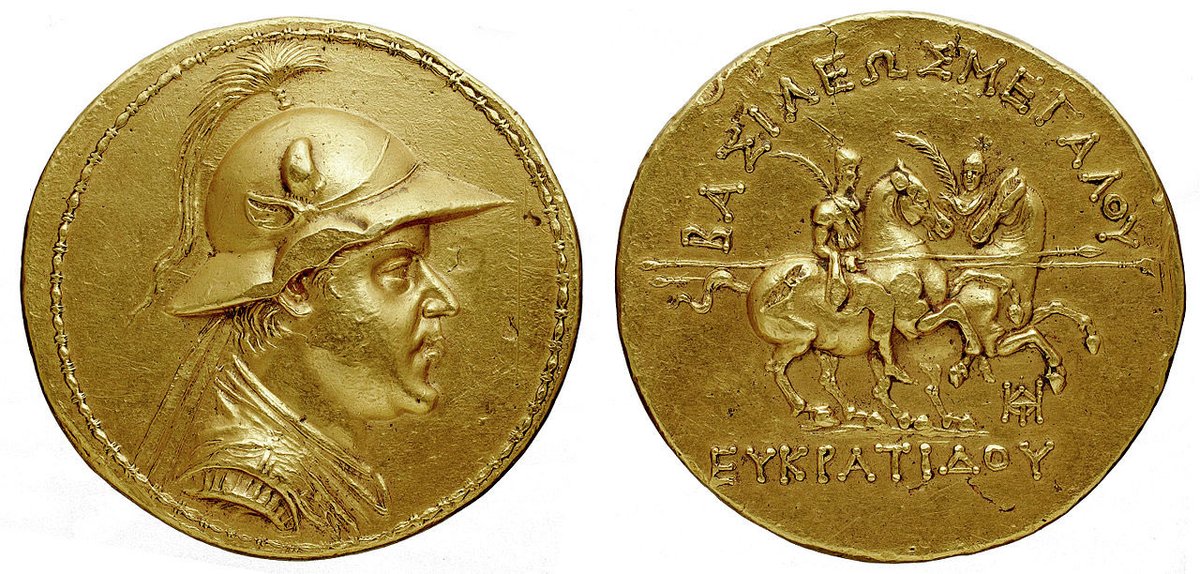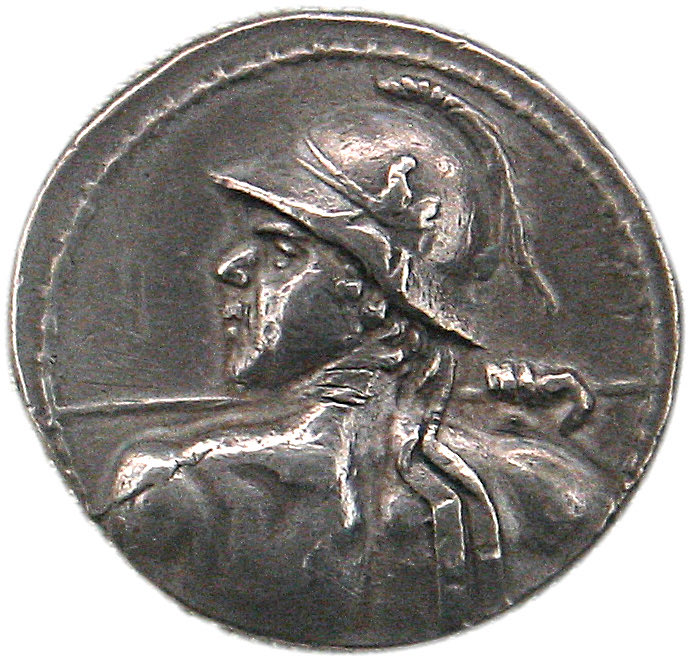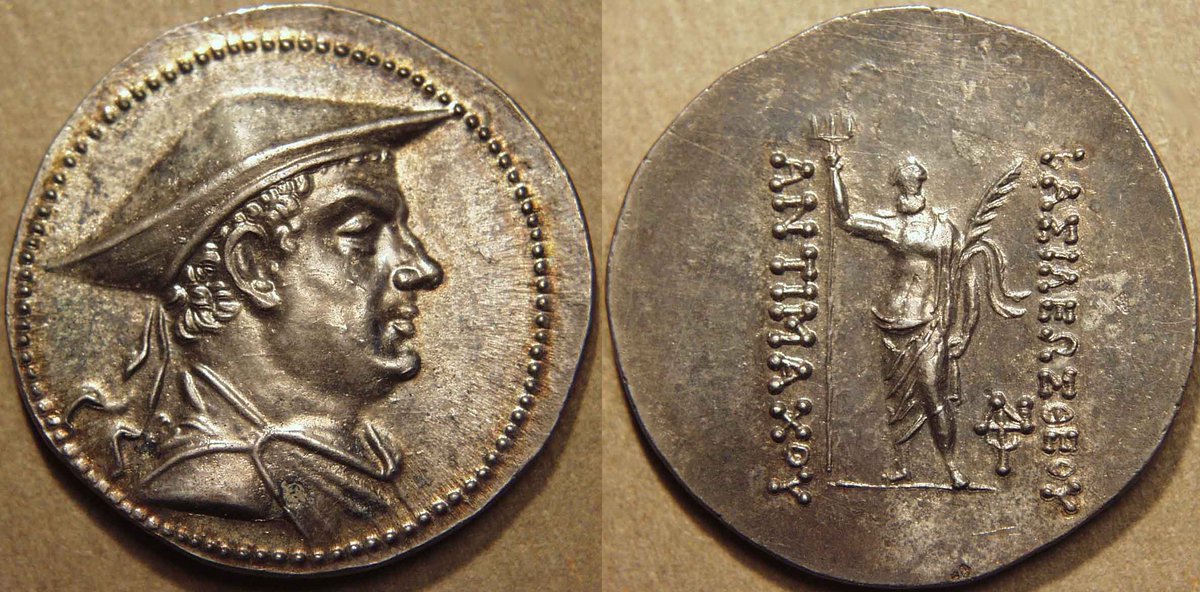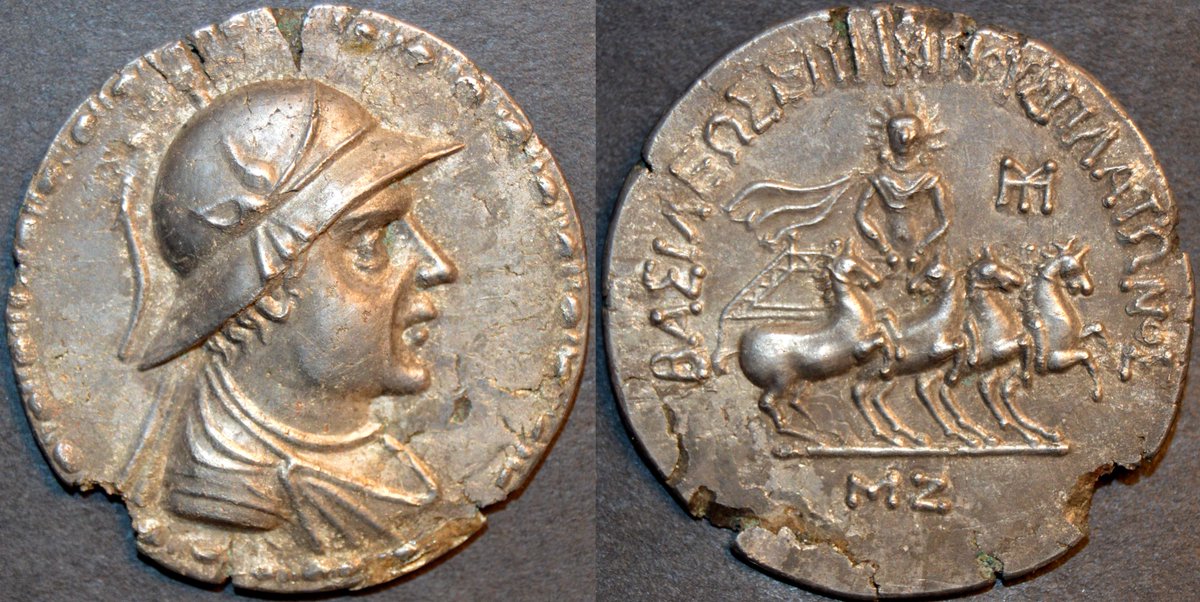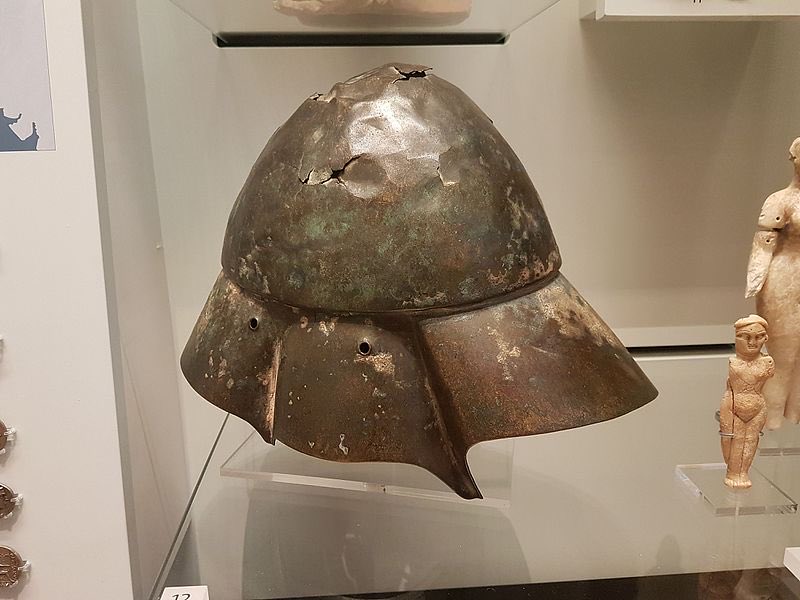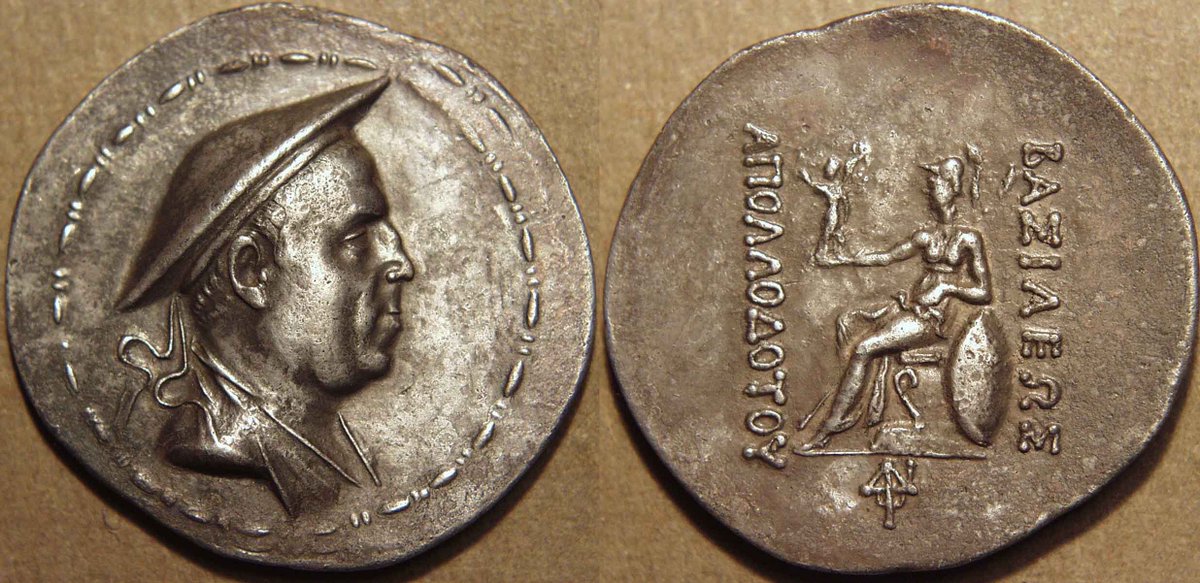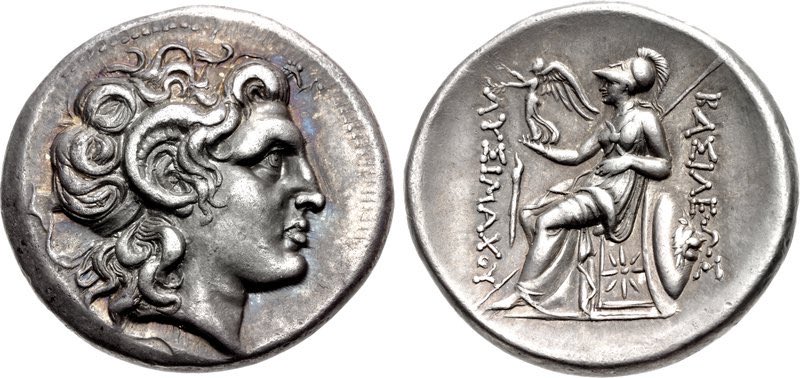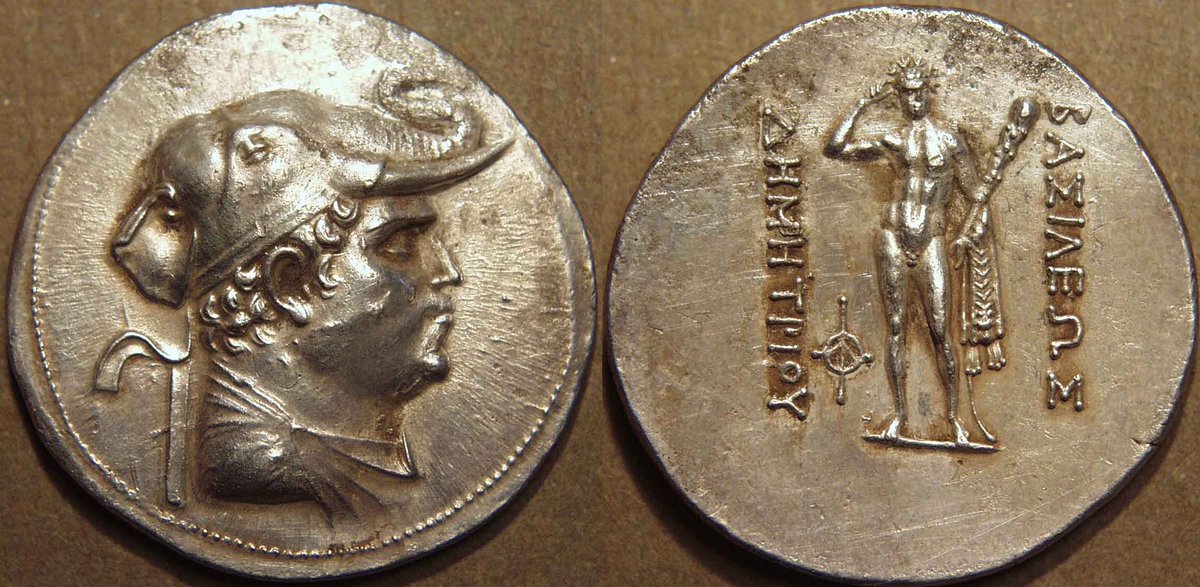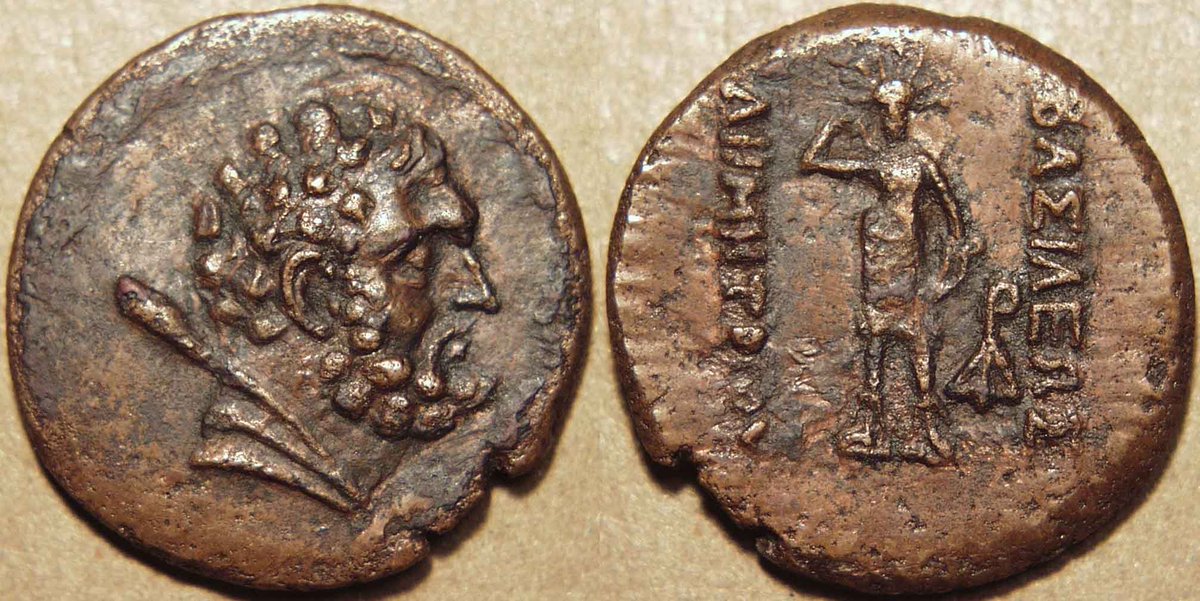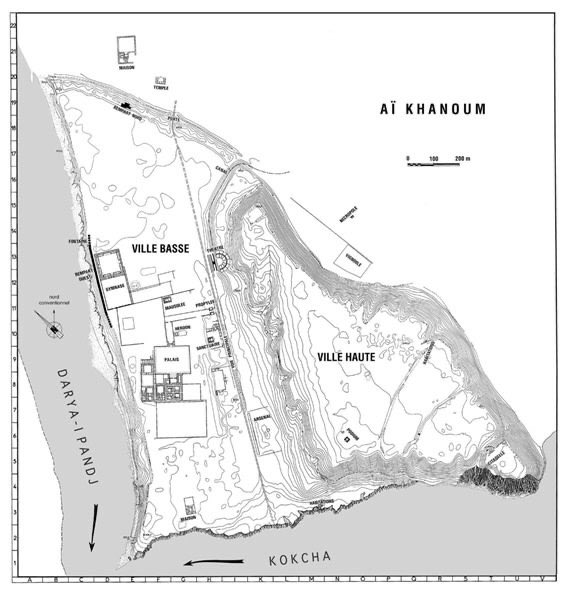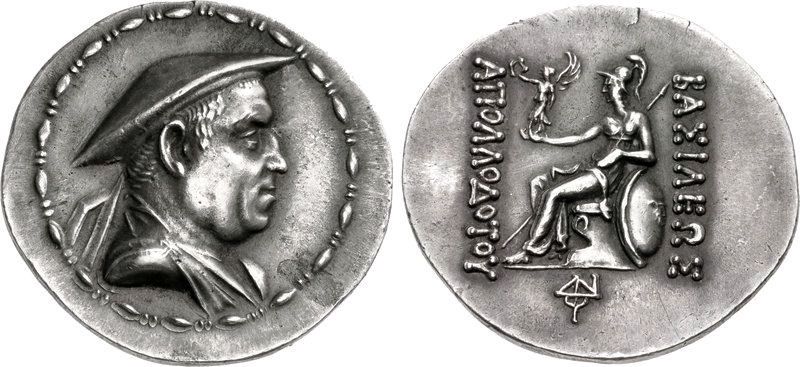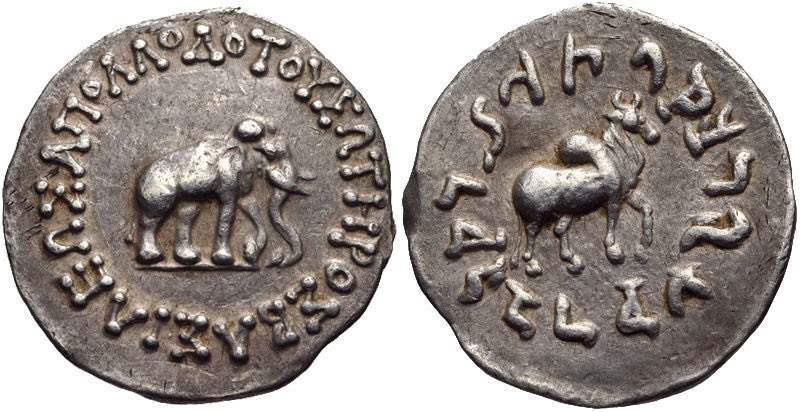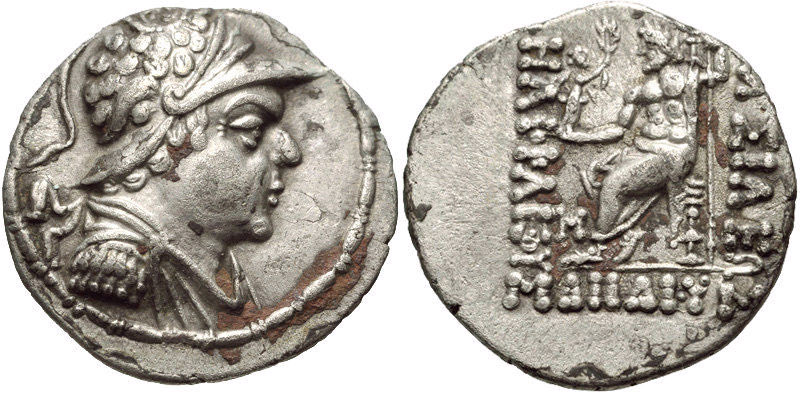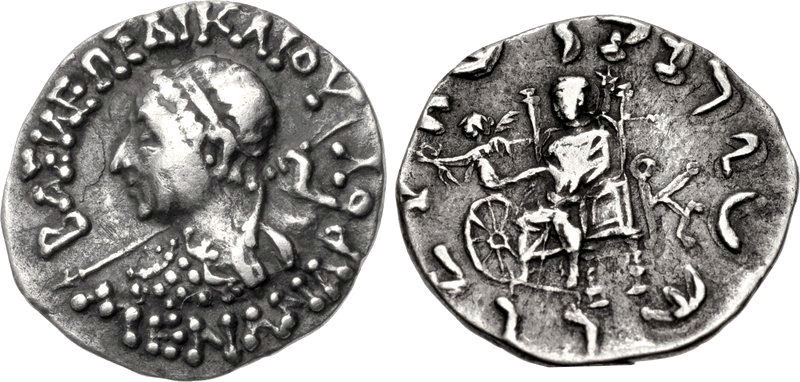Being thinking about coins and coloniser/colonised identities a bit today. Coins of Greco-Bactrians in today’s Afghanistan are famous for their size and quality - like this glorious gold stater of Eukratides I, the largest known gold coin from the Greek world /1
You also see on them some of the most overt militarism in Greek coinage. It’s easy to look at the muscled, spear throwing portrait of Eukratides and see strength - which is of course what it’s meant to show (incidentally this is my favourite coin of all antiquity) /2
I would suggest this is wrong. Rulers use coinage to give bearers - elites, merchants and traders - messages. Eukratides - a usurper, surrounded by enemies, in an area where Graecism wasn’t a given - had a lot to prove and deny his vulnerability (cf. modern analogues) /3
This gets really interesting in the images chosen. How do Hellenistic Kings best show legitimacy? For one, filling with images of the motherland - wearing the Macedonian shepherds’ kausia, or a Boeotian helmet (cf. one found in the Tigris, perhaps from Alexander’s invasion) /4
The obverse also often bear recognisable, orthodox images of Athene - common motifs with added kudos of associations with Greek polis civilisation and martial vigour. Apollodotos I may have ruled deep in the terra nova of the Punjab, but you wouldn’t know from his coins /5
Secondly, Alexander. The king so famous he’s mentioned in the Quran. Most Hellenistic coins copy Big Al’s template with a regal head on the obverse (initially Alexander himself) - oozing legitimacy and a link to the first coloniser (hence Lysimakhos’ awesome tetradrachm) /6
Where this gets neat in Bactria are elephant scalps (here Demetrios I). Ptolemy used them in Egypt to associate with images of Alexander. But they have much more cachet for Bactrian kings - reminders of Al’s victory over Porus of India which delineated the empire /7
(Incidentally, elephants had even more resonance for Seleukid kings - symbols of Seleukos I vital treaty with Chandragupta Maurya, and his epoch defining victory with the 500
elephants given to him and with which he ploughed through Antigonos I’s lines at Ipsos in 301) /9
elephants given to him and with which he ploughed through Antigonos I’s lines at Ipsos in 301) /9
Other images also do both of these - here Demetrios I used the Alexandrine Herakles (ancestor of the Argead house), and a nice Greek Artemis. But there’s more going on here too... /10
Ai Khanum, if not capital an important Greco-Bactrian city and site of a mint, was rammed with Greek architecture and sculpture. But some temples suggest more syncretic gods, and it’s name (Uzbek for ‘Lady of the Moon’) could suggest a Central Asian Artemis analogue /11
This is speculative (!), but what isn’t is later Kings combining aggressive colonial imagery with something special - reference to the ruled. As the Greeks enter India they start including Indian karosthi script and images. Two coins of Apollodotos I show this duality /12
In about sixty years, the conqueror Heliokles I’s coins with Nike-bearing Zeus becomes Menandros II’s Zeus with eight-spiked dharmic chakra and a Kharoshthi legend ‘King Minamdrasa, follower of the dharma’ (but militarism not forgotten, with echoes of Eukratides) /13
And so the end. Coins of Straton II, reigning in the Punjab to c.10 CE as the last Hellenistic king, may be poor equivalents of earlier models. But the beleaguered king still shouts his Greekness - the Hellenistic title Basileus Sotor, Athene on obverse - until extinguished /end
(Credit - images from either Wikimedia commons, or the excellent Coin India website which I’ve just rediscovered at http://coinindia.com/index-greek.html)">https://coinindia.com/index-gre...
@llewelyn_morgan fully expecting you to demolish my amateurish commentary, for what it’s worth....

 Read on Twitter
Read on Twitter